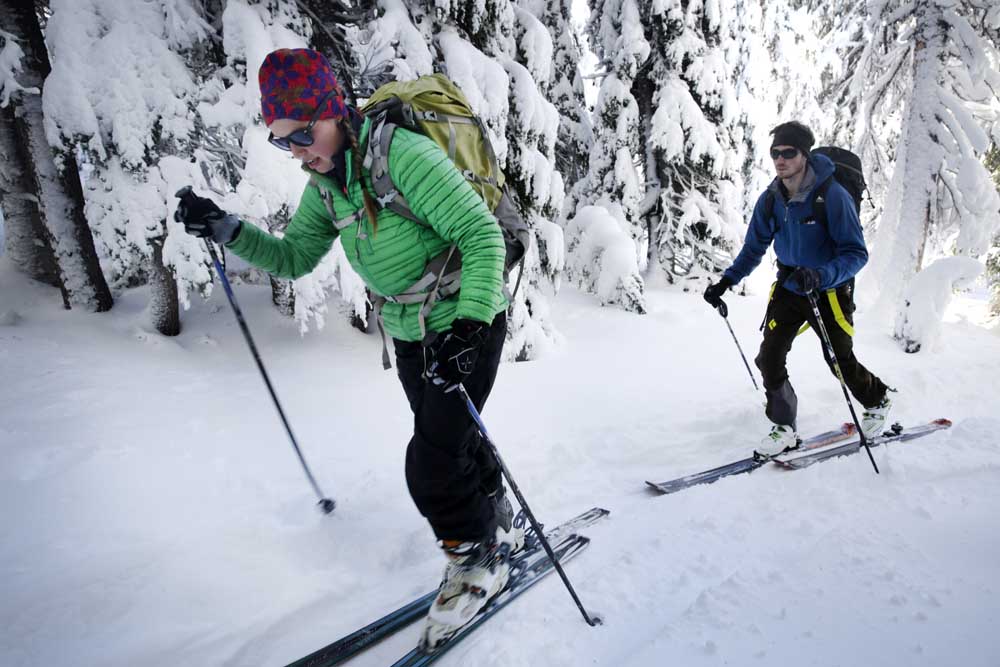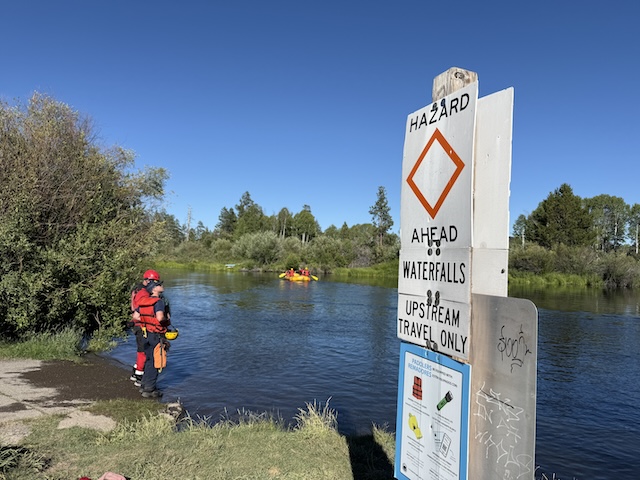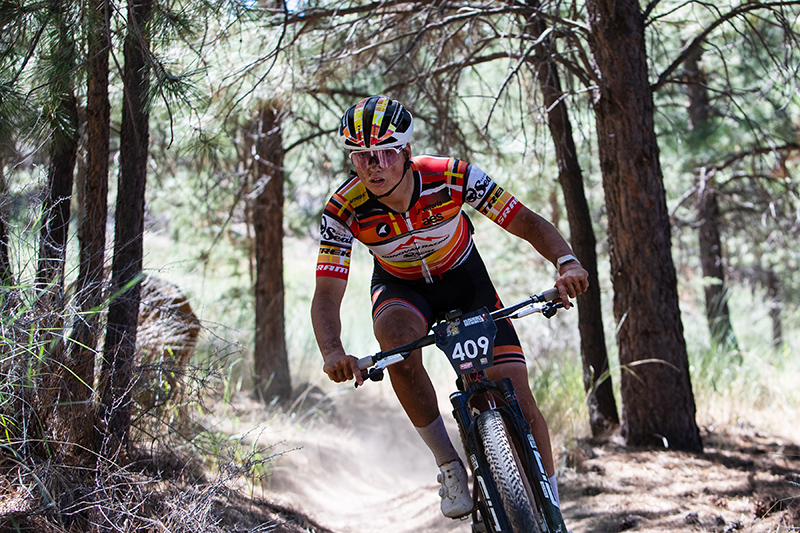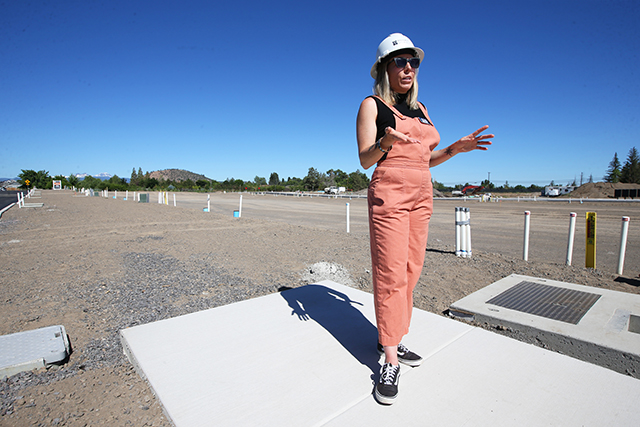Skiing safely in the Central Oregon backcountry requires preparation
Published 3:30 am Friday, January 28, 2022

- Katie Selin, left, and Alec Peters backcountry ski at Tumalo Mountain in 2014. Accidents can happen in the backcountry, and smaller backpacks containing dry clothing, extra food and other safety-related items can be worn without being too bulky.
Being prepared for winter conditions can be a matter of life or death.
The day started out like many other ski trips. It was November, and early snows had been followed by heavy rain. Then a fresh dump of a couple feet of snow inspired a group of friends to head to Todd Lake, taking turns breaking trail. It was snowing lightly, overcast with a chilly wind — but the trail breaking kept everyone warm. We were all jubilant that we were finally getting out on skis again.
Trending
When we got to the meadow approaching Todd Lake, a skier coming from the direction of the lake said that he had turned around due to difficulty crossing the creek in the meadow. So we veered off the main trail looking for a way across the creek. We came to a spot where the creek was only a couple feet wide, and by carefully side stepping, it was possible to cross. The first person made it across with no problem. The next person managed to step across with one ski, but as he was bringing his second ski across, the snowbank gave way, and he went into the creek. Yikes!
The water was just a bit over knee deep, but as he slid in, he fell backwards and was completely submerged. When he stood up, his shoulders were about even with my feet as I stood on the snowbank.
The seriousness of the situation hit us immediately. Our first attempt to pull him out wasn’t successful; he still had on his skis. Finally, he reached into the frigid water and took off the skis, and handed them up to us, along with his soaked pack. We then were able to drag him out. It seemed like it took forever to get him out of the water, but it probably took us less than five minutes.
Now what to do? Every single thing he was wearing was wet, even his hat. He had brought extra clothes — but they were wet too. We were 2 miles from the trailhead.
I pulled a small tarp shelter and a short foam pad out of my pack. We got him under the tarp and assessed what we had for extra clothes. We stripped off his wet upper layers. I had an extra base layer and a puffy coat in my pack, which luckily fit him. I had extra gloves and a spare hat as well. But there was nothing to be done about the wet pants. Fortunately, they were a synthetic fabric that didn’t absorb water, so most of it drained off him pretty quickly. We also had a pair of wind pants that he put on over the wet pants to help prevent heat loss.
He stood on the foam pad, emptied the water out of his boots and wrung out his socks. Someone gave him a cup of hot tea. It was the best we could do, and then it was time for the ski out.
Trending
It took us nearly an hour to get back, with a couple of stops to scrape ice off his skis and to give him another swig of hot tea. He had reached the uncontrollable shivering stage of hypothermia by the time we reached the trailhead. One person had raced ahead to get the car started so it would be warm by the time he arrived. He was still very cold on the drive back to town, despite the warm car — but after a hot shower, a long soak in a hot tub and a good night’s rest, he was fine.
One more thing: He was 86 years old.
There are times when it’s tempting to head out with no pack and no emergency supplies. In fact, on this November day, about half of the people in our group had nothing more than a fanny pack. Lots of people carry a small first aid kit or an extra energy bar, but if someone has a disabling injury or an equipment problem in the winter, it’s the cold that becomes the greatest danger.
Carrying some emergency supplies doesn’t mean you have to have a pack that looks like it is designed for an expedition. A large garbage bag (think: Les Schwab tire bag) can become an improvised shelter. A foam pad is helpful, although you can sit on your pack to get some insulation from the cold. But what if you have to sit and wait for help for a couple hours? Do you have enough clothing to keep reasonably warm?
We are fortunate to have a great volunteer search and rescue organization in Deschutes County. However, even assuming you have a good cell signal from your mountain location, and are able to summon help right away, generally it will be 90 minutes to two hours by the time folks get the page, respond to the search and rescue building, get prepped/briefed and out the door and to the scene. That time could be shorter if someone on the volunteer callout happens to be recreating near you. But it could be much longer if you’re in a remote location, or if there’s another rescue mission underway elsewhere.
If you are a person who has to keep moving just to keep warm and are a bit grumpy when your companions stop to chat with a passerby, I am guessing you might be pretty cold if one of those companions is down with a broken hip or a head injury from a fall and you are waiting for help.
The next time you head out, imagine that you’re going to be stuck somewhere for a couple of hours and have to put on every bit of extra clothing you have along. Do you think you’d be warm enough? For how long?
As a group, it turned out we were well-equipped for helping our ski companion. But it was interesting to see what happened on subsequent ski trips with these folks: More people carried more emergency gear, especially clothing. A bad experience is worth more than good advice.
The other aspect of keeping safe is to evaluate the risks you are taking, given the terrain and weather and distance you are from help. That evaluation process is especially important if you are traveling alone. It was a bad choice for us to try to cross that creek. Luckily, things turned out OK.
Oh yeah, and about that 86-year-old guy? He’s now 92, and still skiing.
The 10 essentials
Don’t head into the back country underprepared. The following items are among those widely considered essential for backcountry hiking and camping.
Navigation — Map, compass and GPS system
Sun protection — Sunglasses, sunscreen and hat
Insulation — Jacket, hat, gloves, rain shell and thermal underwear
Illumination — Flashlight, lanterns, headlamp
First-aid kit
Fire — Matches, lighter and fire starters
Repair kit and tools — a pocketknife and other tools could prove handy
Nutrition — Bring along an extra day’s supply of no-cook food
Hydration — water and water treatment supplies
Emergency shelter — Tent, bivouac, tarp or space blanket
Source: nps.gov








